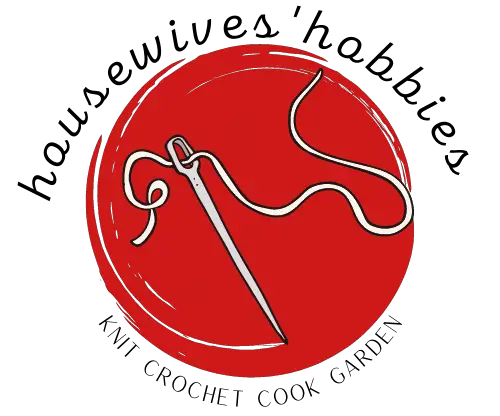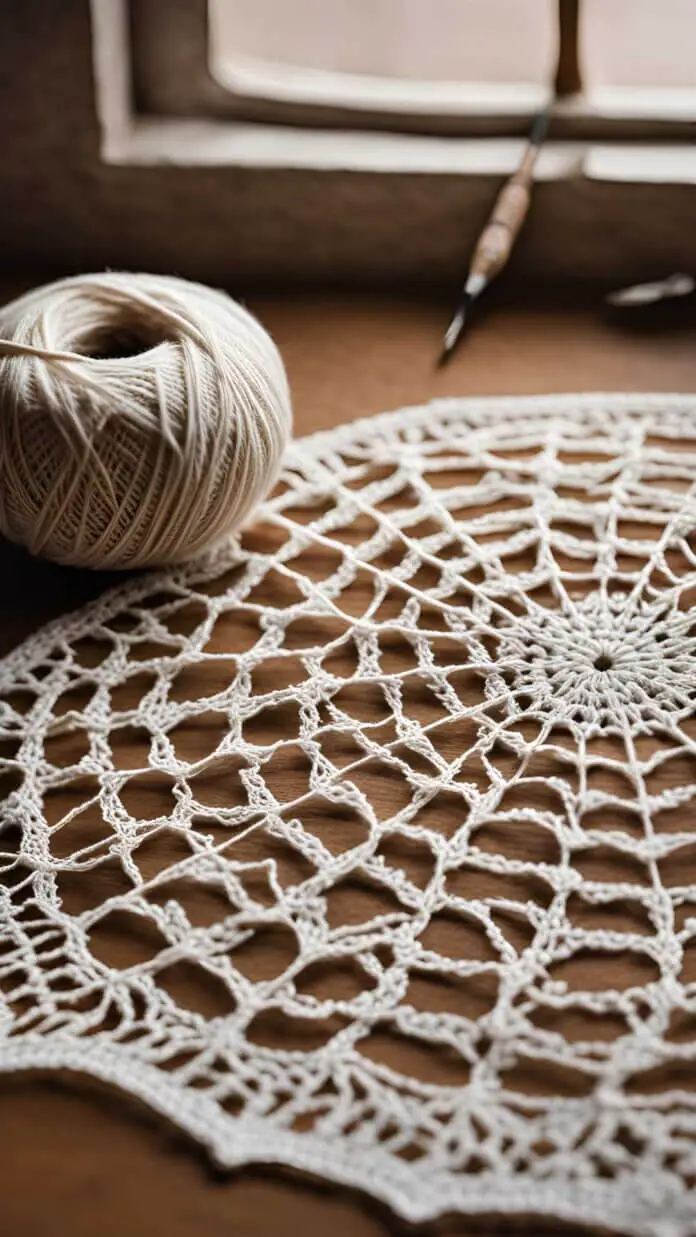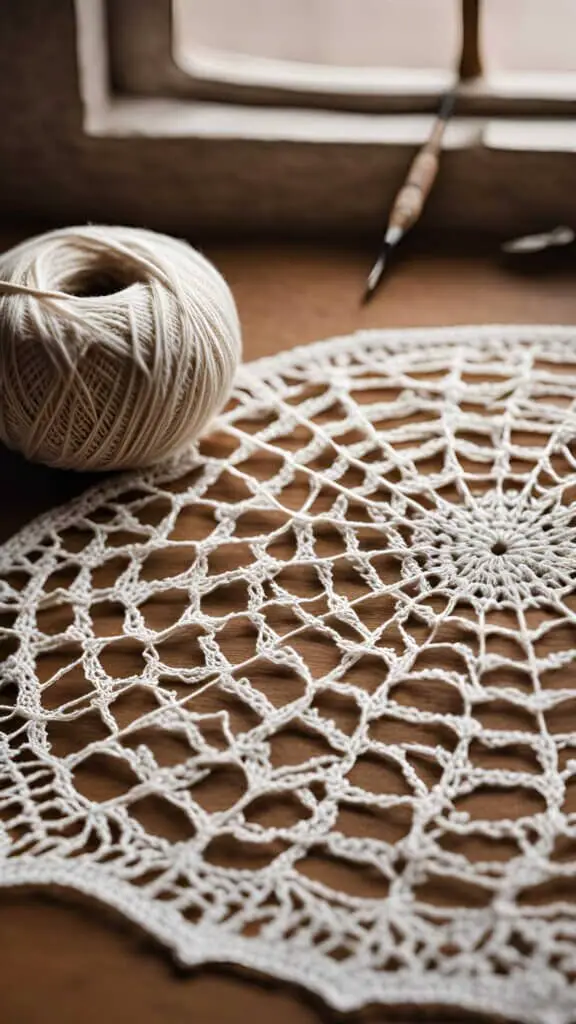Spider lace crochet is a technique that features intricate designs alongside the delicate beauty of lace.
This guide covers everything needed to create stunning spider lace crochet projects, including selecting the right materials and tools, understanding patterns, and mastering essential stitches.
Whether one is an experienced crocheter or just beginning, this guide will offer tips and techniques to help bring spider lace creations to life.
Prepare to explore your creativity.
What Is Spider Lace Crochet?
Spider Lace Crochet is an engaging style of lace crochet characterized by intricate patterns created through a mix of different crochet techniques. It has become a favored option among crochet enthusiasts and within the fiber arts community.
The delicate designs often feature unique motifs and embellishments, leading to beautiful handmade items that can enhance home decor. With the appropriate crochet supplies and some creativity, anyone can learn spider lace crochet, making it a fulfilling DIY project for those interested in textile art.
What Are the Materials Needed for Spider Lace Crochet?
To successfully create spider lace crochet, several materials are necessary, including high-quality yarn and the appropriate crochet hook sizes specifically designed for lacework. This ensures that intricate patterns are effectively brought to life.
Different thread types can also be used to enhance the visual appeal and texture of the lace motifs. Using proper crochet techniques will help achieve the desired aesthetic.
What Type of Yarn is Best for Spider Lace Crochet?
The best yarn for spider lace crochet typically includes lightweight and fine yarn types, such as cotton or lace-weight acrylic. These options allow for the delicate and airy qualities that characterize this art form. Choosing the right yarn can significantly impact the final appearance of crochet patterns and the overall complexity of intricate designs.
For optimal results, consider yarns like Brooklyn Tweed’s Loft, known for its softness and excellent stitch definition, or Drops Lace, a lightweight blend that moves smoothly through fingers, making it suitable for detailed work.
When selecting colors, it is advisable to choose shades that complement each other, such as pastels paired with neutral tones, to enhance the decorative quality of the finished piece. A tonal gradient can add depth, allowing intricate patterns to stand out without overwhelming the overall design.
What Size Crochet Hook Should Be Used for Spider Lace Crochet?
For spider lace crochet, selecting a crochet hook size that matches the chosen yarn is important. Generally, a smaller crochet hook results in more defined stitches and intricate lace details. Many crocheters use stitch markers to help keep track of their patterns, particularly when working with delicate lacework.
Determining the right hook size involves testing different crochet hooks to find one that achieves the desired tension and drape. It is recommended to experiment with a gauge swatch before starting the main project; this sample allows for adjustments and ensures the intricate patterns will come together as intended.
Plus gauge, using stitch markers at regular intervals can simplify the process, especially in patterns with complex repeat sequences. This provides a visual cue to help track rows and stitches, contributing to a more enjoyable crocheting experience.
What Other Tools Are Needed for Spider Lace Crochet?
Plus yarn and crochet hooks, several other tools enhance the spider lace crochet experience. Pattern diagrams and crochet charts offer visual guidance for following intricate designs. Essential crochet supplies also include stitch markers, a tape measure for project planning, and scissors for finishing touches.
A yarn needle is useful for weaving in ends, helping to create a polished look. A comfortable stitching chair can significantly improve the crafting experience, as ergonomics are important during lengthy sessions. A lighted crochet hook can illuminate intricate stitches, allowing for precision even in low-light environments.
Those exploring various crochet techniques may find it beneficial to maintain a crochet journal to jot down notes and track progress. By incorporating these tools into their crafting routine, enthusiasts can enhance their skills and enjoy a more seamless crochet experience.
How to Read a Spider Lace Crochet Pattern?
Understanding how to read a spider lace crochet pattern is essential for successfully creating intricate lace designs. These patterns typically use unique symbols and crochet terminology, along with detailed diagrams that guide the crocheter through each stitch, making it accessible for even beginner crochet enthusiasts to follow along.
What Do the Symbols and Abbreviations Mean in a Spider Lace Crochet Pattern?
Crochet patterns for spider lace feature various symbols and abbreviations that represent specific stitches and techniques. It is important to become familiar with crochet terminology to ensure accurate execution. Understanding these symbols enables crocheters to follow pattern instructions with confidence, and tools like stitch markers can assist in tracking progress.
By learning the meanings of common symbols, such as the chain stitch (ch), slip stitch (sl st), and double crochet (dc), beginners can more easily navigate intricate designs. For instance, a spider lace pattern may illustrate a series of chains followed by clusters, making careful stitch counting essential. Utilizing highlighting tools or charts can also improve readability, transforming complex tasks into manageable steps.
With practice, any crocheter can gain the skills needed to tackle these beautiful patterns and create stunning lace pieces that showcase their personal style.
How to Understand the Stitch Diagram in a Spider Lace Crochet Pattern?
Stitch diagrams in spider lace crochet patterns provide visual representations of intricate designs, helping crocheters visualize the placement and movement of each stitch. Understanding these diagrams can improve crochet techniques and ensure that the intended decorative effect is achieved.
By converting written instructions into a visual format, these diagrams help bridge the gap between textual guidance and practical execution. When working on a lace project, visually observing the flow of stitches can clarify complex sequences that might be challenging to understand through written instructions alone.
For optimal results, it is beneficial for crocheters to reference both the stitch diagram and the accompanying instructions at the same time, which helps maintain consistency in their work. Paying attention to the symbols and their meanings can aid in avoiding mistakes, ultimately leading to beautifully crafted lace pieces that showcase the crocheter’s skill and creativity.
How to Crochet the Basic Stitches for Spider Lace Crochet?
Mastering the basic crochet stitches is important for anyone interested in spider lace crochet, as these fundamental techniques serve as the foundation for more complex patterns and intricate designs.
New crocheters will gain from a solid understanding of these basic stitches, which will enhance their confidence and skills.
How to Make a Chain Stitch?
The chain stitch serves as the foundation for most crochet patterns, including spider lace crochet. It is created by pulling a loop of yarn through an existing loop on the crochet hook, forming a chain. This simple stitch is essential for starting projects and establishing a base for more intricate designs.
To master this technique, begin by holding the yarn and hook comfortably, ensuring that your grip allows for easy movement. While creating each stitch, it is important to maintain consistent tension—not too tight, which could hinder your progress, and not too loose, which may lead to an uneven chain.
Practicing a series of chain stitches until they become second nature is recommended before moving on to more complex crochet techniques. This solid foundation will help build confidence and enhance the overall crafting experience while exploring the diverse world of crochet.
How to Make a Single Crochet Stitch?
The single crochet stitch is one of the most fundamental crochet stitches, creating a tight and sturdy fabric that can be used in various projects, including spider lace crochet. This stitch is often employed to form solid areas within lace designs or as a foundation for additional crochet techniques.
To make a single crochet stitch, start by ensuring that the initial chain is the appropriate length for your project. Insert your hook into the desired stitch, yarn over, and pull through so that you have two loops on your hook. Yarn over again and pull through both loops. As you work, it is important to monitor your tension; it should be firm but flexible enough to prevent tight stitches.
For consistent sizing, maintaining the same tension throughout your work is beneficial. Using the same yarn and hook size will contribute to even and uniform stitches, improving the overall appearance of the finished piece, an essential aspect of crochet projects in textile art.
How to Make a Double Crochet Stitch?
The double crochet stitch is taller than the single crochet stitch and is frequently used in lace crochet patterns to create airy, open designs while still providing structure. Mastering this stitch is important for achieving the desired effects in spider lace crochet projects, particularly those involving intricate lace and crochet techniques.
To execute it correctly, start with yarn-overs and insert your hook into the designated stitch. Then, yarn-over again and pull through, resulting in three loops on the hook. This process is crucial in creating lacework that is both decorative and functional.
It is not uncommon to inadvertently yarn-over twice, which can create an unbalanced appearance. To maintain height, it is essential to consistently pull the yarn through evenly, especially at the base stitch, to prevent uneven tension. This consistency is crucial for crochet enthusiasts aiming for beautiful finished projects.
Remember that the double crochet stitch is a foundational element in many lace patterns, and achieving uniform height is key for a polished finished piece.
How to Make a Treble Crochet Stitch?
The treble crochet stitch adds height and openness to crochet patterns, making it a useful technique in spider lace crochet for creating intricate designs. This advanced crochet technique can significantly enhance a crocheter’s skill set and contribute to the creation of crochet accessories.
By mastering this stitch, individuals can improve their creations and build confidence in their overall crochet journey. To start, gather your yarn and hook, ensuring that the materials are suitable for smooth execution. Begin with a foundation chain, then yarn over twice before inserting your hook into the designated stitch. This practice is especially beneficial for creating shawls and doilies.
It is important to remember that each yarn over affects the height and fluidity of the treble crochet. Pull the yarn through and follow the steps to complete the stitch. With practice, anyone can achieve beautiful results and elevate their crochet projects.
How to Crochet the Spider Lace Stitch?
Crocheting the spider lace stitch involves a series of detailed movements that produce beautiful lace motifs, making it a favored option for decorative crochet projects and home decor items.
By incorporating a mix of basic and advanced crochet techniques, crafters can create intricate patterns that highlight their skills and creativity, contributing to the world of fiber arts and handmade items.
How to Create the Spider Lace Foundation Row?
Creating the foundation row for spider lace crochet is essential as it establishes the groundwork for the entire project, forming the initial loop structure needed for the following rows. The foundation row typically involves chaining a specified number of stitches and working designated stitches into each chain to begin the intricate lace design. This step is vital for achieving decorative edges and openwork effects.
To ensure a strong start, maintaining consistent tension throughout the chaining process is important; this provides stability and elasticity to the foundation, allowing the lace to drape effectively. A common issue encountered is an uneven stitch count, which can distort the lace pattern as the project progresses. Using a stitch marker can be helpful in tracking each segment to avoid this.
It’s beneficial to explore various foundation techniques; discovering what works best for you can enhance your crochet experience. Practicing different methods will ultimately improve your skills and build your confidence, paving the way for project ideas and crochet inspiration.
How to Work the Spider Lace Stitch Pattern?
Working the spider lace stitch pattern requires careful attention to detail. This technique involves a series of stitches worked in a specific order to create the lace design. By following the pattern instructions closely, crocheters can achieve results that enhance any lace crochet project, showcasing their crochet skills and crochet stitches knowledge.
To effectively execute this stitch, it is important to understand the fundamental stitches involved, such as chains and double crochets, as they are the building blocks of this intricate design. Maintaining consistent tension during the process is crucial; uneven tension can lead to distortion in the pattern, affecting the overall appearance.
If difficulties arise, particularly with stitch count or gap formation, it is advisable to pause and reassess the previous rounds. This allows for necessary corrections to be made before proceeding, ensuring a smoother experience and better results.
What Are Some Tips for Crocheting Spider Lace?
When crocheting spider lace, certain tips can improve both the process and the quality of the finished product, ensuring that intricate patterns are executed accurately. These tips include managing tension and recognizing the importance of taking breaks, all of which contribute to a more enjoyable and successful crochet experience. This approach can transform DIY projects into beautiful crochet designs.
How to Keep Your Tension Consistent?
Maintaining consistent tension while crocheting spider lace is essential for achieving uniformity in stitches and ensuring that intricate designs look polished and professional. Crocheters can develop tension management techniques that align with their individual styles and preferences, ensuring that crochet gifts are crafted with care and precision.
One effective strategy is to practice on a sample swatch before starting the main project. This approach allows for experimentation without the pressure of perfection. Adjusting the grip on the crochet hook can also significantly affect how the yarn is manipulated, leading to smoother, more consistent movements. It is beneficial to remain mindful of yarn tension throughout the work process; being aware of how the yarn flows or bunches can prompt adjustments that improve the overall appearance of the project.
By using these techniques, crocheters can find the right balance that suits their unique style.
How to Fix Mistakes in Your Spider Lace Crochet?
Mistakes are a natural part of the crochet journey, and knowing how to fix them in spider lace crochet is essential for improving skills and completing beautiful projects. Embracing these challenges can help build a strong sense of community within the crochet community.
Embracing these errors can build confidence and foster a supportive atmosphere among fellow crafters. For example, uneven tension can often be addressed by adjusting the grip on the yarn or trying different hook sizes to find a more comfortable rhythm. Additionally, missed stitches can be identified by regularly counting and reviewing the pattern, which encourages attention to detail. This process is often aided by using stitch markers and crochet terminology from pattern diagrams.
By breaking down complex patterns into manageable parts, crocheters can execute their designs more effectively and pinpoint where issues may have occurred. Each mistake serves as a lesson, ultimately leading to impressive results and enhanced creativity.
Frequently Asked Questions
What is a Spider Lace Crochet Pattern?
A Spider Lace Crochet Pattern is a type of crochet pattern that creates a lacy, web-like design resembling a spider’s web. It is typically used for creating delicate and intricate designs in crochet projects, including vintage crochet and modern crochet styles.
What materials do I need to create a Spider Lace Crochet Pattern?
To create a Spider Lace Crochet Pattern, you will need crochet thread or fine yarn in the color of your choice, a crochet hook in the appropriate size, and a pair of scissors. You may also want to have a stitch marker and a tapestry needle on hand for finishing touches. These materials are crucial in the realm of fiber arts and handmade items.
Can beginners learn how to crochet a Spider Lace Crochet Pattern?
Yes, beginners can learn how to crochet a Spider Lace Crochet Pattern with some practice and patience. It may be helpful to start with simpler crochet patterns before attempting a Spider Lace pattern to get familiar with basic crochet stitches. This journey can be supported by beginner-friendly crochet classes and online tutorials.
How long does it take to crochet a Spider Lace Crochet Pattern?
The time it takes to crochet a Spider Lace Crochet Pattern can vary depending on your crochet speed and the complexity of the pattern. Some may be able to complete a small Spider Lace project in a few hours, while others may take a few days. Engaging in crochet blogs and pattern testing can provide further insights into managing time and effort.
What types of projects can I use a Spider Lace Crochet Pattern for?
A Spider Lace Crochet Pattern can be used for a variety of projects, such as doilies, table runners, scarves, shawls, and even clothing. It is a versatile pattern that can add a delicate touch to any crochet project, inspiring seasonal projects and pattern repetition.
Are there different variations of the Spider Lace Crochet Pattern?
Yes, there are different variations of the Spider Lace Crochet Pattern, such as the spider stitch, spider web stitch, and spider stitch lace. Each variation creates a slightly different design, allowing for endless possibilities in your crochet projects, including crochet art and decorative edges.




